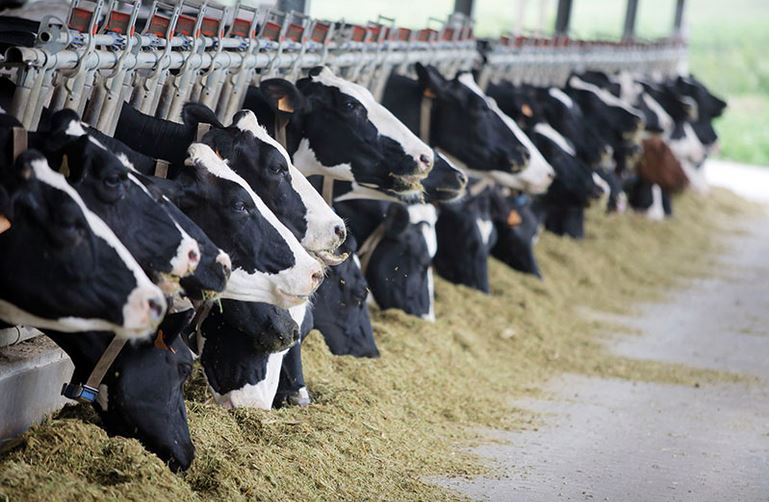



Weekly protein digest: fluid milk production shows wide regional variation
Read the latest global dairy industry and beef export updates from Jim Wyckoff.European dairy market overview from USDA
Western overview
Mid-August high heat in Germany and France has led to lower resulting milk production. Early reporting observations concluded that production was not only lower than the previous week, but lower than a year ago.
EU milk production during June 2020 was 1.5 percent higher than June 2019, according to Eurostat. January – June 2020 milk production was reported as 1.4 percent higher than January – June 2019.
Looking at some of the primary Western European milk producing countries January – June 2020 compared with January – June 2019, the percentage changes are Germany, +1.0 percent; France, +0.7 percent; Ireland, +3.5 percent; Netherlands, +2.4 percent; and Italy, +3.0 percent according to CLAL data provided to USDA.

EU cheese production during June 2020 was 4.3 percent higher than June 2019, according to Eurostat. EU cheese production January - June 2020 was 2.0 percent higher than January - June 2019, according to CLAL data provided to USDA.
In some of the primary Western European cheese producing countries January – June 2020 compared with January – June 2019, the percentage changes are Germany, +3.4 percent; France, -0.5 percent; Netherlands, +2.0 percent; Italy, -0.3 percent; and Ireland, +7.1
percent, according to CLAL data provided to USDA.
January – June 2020 cheese exports from the EU, 650,738 MT, were even with the same period in 2019 according to Eurostat data reported by the European Commission. Top importers, quantity imported, and percent change from the same period in 2019 when reported include United Kingdom, 203,776 MT, -21 percent (DMN percentage calculation); Japan, 63,812 MT, +12 percent; and United States, 52,344 MT, -12 percent.
Eastern overview
Milk production in Poland during June 2020 was 4.6 percent higher than June 2019, according to Eurostat. January – June 2020 milk production was reported as 2.8 percent higher than January – June 2019 according to CLAL data provided to USDA. Production of some dairy commodities in Poland January – June 2020 compared with January – June 2019, are cheese, +4.7 percent; butter, 10.7 percent; SMP, +3.6 percent; and WMP, -4.2 percent.
USDA’s US weekly milk production report
Fluid milk
Notably, school district bottling orders are up on the week. That being said, contacts say compared to previous years, orders are resolutely lighter. Milk production varies by location. Midwestern and Mid-Atlantic production are mostly steady, but some Southern and Western states’ high temperatures are hindering yields.New Mexico’s milk output, interestingly, was reportedly higher despite the late summer heat.
Cheesemakers report plentiful milk yields, from $5 under to $1 over Class III in the Midwest. Cream demand is steady to strong, depending on the area. Contacts expect cream availability to open up further next week, ahead of the holiday weekend. FOB cream multiples are 1.33-1.43 in the East, 1.25-1.42 in the Midwest, and 1.05- 1.25 in the West.
Dry products
Low/medium heat nonfat dry milk (NDM) prices firmed in all regions this week, on lighter production schedules/ lower condensed skim availability. Buttermilk powder prices rose on the bottom of the Central/East range, while remained steady in the West.
As fall’s baking season approaches, and inventories are reportedly tighter, particularly for recently produced loads, dry buttermilk market tones are steady to firm. Dry whole milk prices were steady this week. Dry whole milk production is based mostly on contractual and/or immediate needs of end users, as dryer time is particularly focused on NDM/SMP production.
Dry whey production is active and inventories are growing. Prices slid in the Central region, narrowed in the West, and decreased slightly on the top of the range in the Northeast. Whey protein concentrate 34 percent (WPC 34 percent) prices slipped. Demand for interchangeable WPC 34 percent is lacklustre.
Lactose prices increased by half a cent on the top end of the range, despite questionable market tones. Acid casein and rennet casein prices held steady, although contacts expect milk supplies to be plentiful for upcoming production schedules.
Latest US Department of Agriculture (USDA) reports, and other news
Demand for beef remains flat in Japan
Japan’s beef production is projected to remain flat in 2021 as marginally higher slaughter is offset by lower carcass weights. Falling wagyu prices due to oversupply is expected to lead to slightly lower calf production in 2021. Beef consumption is projected to recover in 2021 after a slowdown in 2020. Beef imports will remain flat as traders maintain buffer stocks against future market shocks.
US beef export pace trends downward
US beef net sales of 11,400 MT reported for 2020 were down 4 percent from the previous week and 19 percent from the prior 4-week average.
Increases were primarily for Japan (2,600 MT, including decreases of 500 MT), South Korea (2,000 MT, including decreases of 400 MT), China (1,800 MT, including decreases of 100 MT), Taiwan (1,500 MT, including decreases of 100 MT), and Indonesia (1,000 MT).
For 2021, net sales of 400 MT were primarily for Canada. Exports of 17,400 MT were down 4 percent from the previous week and 2 percent from the prior 4-week average. The destinations were primarily to South Korea (5,600 MT), Japan (5,100 MT), Taiwan (1,600 MT), China (1,100 MT), and Hong Kong (1,000 MT).
Read the latest outlook on the global pig market on The Pig Site and poultry meat analysis on The Poultry Site.
TheCattleSite News Desk
IMPORTANT NOTE: I am not a futures broker and do not manage any trading accounts other than my own personal account. It is my goal to point out to you potential trading opportunities. However, it is up to you to: (1) decide when and if you want to initiate any traders and (2) determine the size of any trades you may initiate. Any trades I discuss are hypothetical in nature.
Here is what the Commodity Futures Trading Commission (CFTC) has said about futures trading (and I agree 100%): 1. Trading commodity futures and options is not for everyone. IT IS A VOLATILE, COMPLEX AND RISKY BUSINESS. Before you invest any money in futures or options contracts, you should consider your financial experience, goals and financial resources, and know how much you can afford to lose above and beyond your initial payment to a broker. You should understand commodity futures and options contracts and your obligations in entering into those contracts. You should understand your exposure to risk and other aspects of trading by thoroughly reviewing the risk disclosure documents your broker is required to give you.




